Van Gogh Dublin – An Immersive Journey is many things, and one of those is definitely trippy. Within two minutes of it – the show, the moving projection, the immersive experience – starting, my companion turns to me and, mirroring my own thoughts, whispers, “Imagine watching this stoned!”
The precision and speed of the technology involved is such that it could hardly have been created while stoned, but the all-enveloping, no-boundaries nature of what the creators are trying to get at certainly appears to ape the concept of consciousness-expansion.
Van Gogh Dublin – An Immersive Journey arrived at the RDS Dublin Shelbourne Hall amid controversy. No sooner had the "immersive journey" been announced for the RDS, but a similar show (Van Gogh: The Immersive Experience) declared it was en route to Dublin.
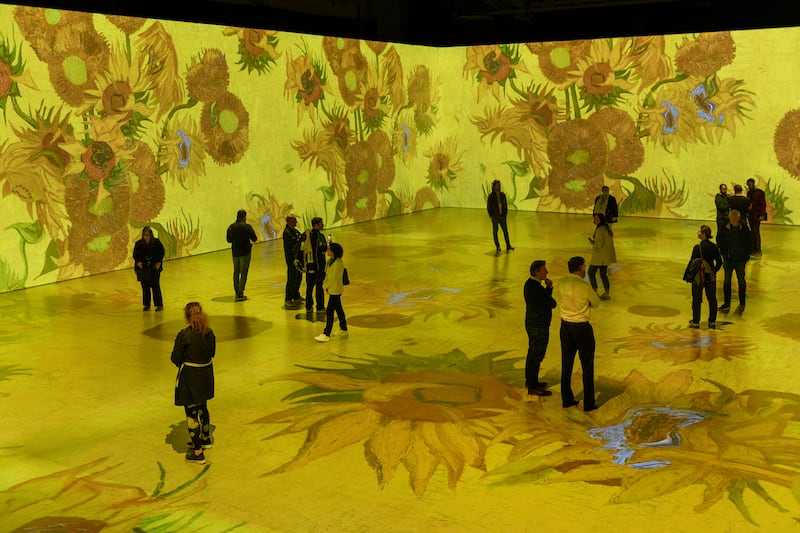
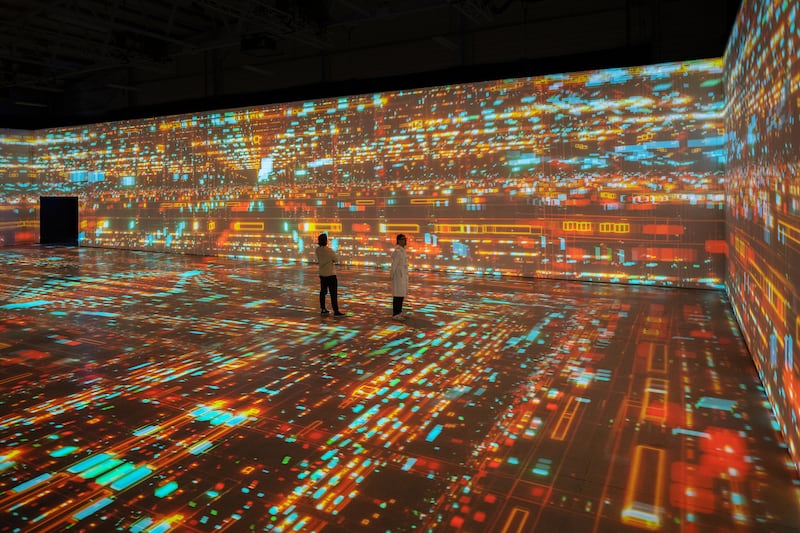
You wait for one large commercial van Gogh-themed projection show to come, and two arrive at once. Only, the other one seemingly had not confirmed a venue and sold tickets for a “secret location”. The customer confusion over the van Gogh double-up featured on Liveline.
That Experience show did not arrive and tickets were refunded. Organised by Fever and Exhibition Hub, who’ve presented van Gogh experiences internationally, it is apparently being rescheduled to the end of June.
It turns out there’s a number of van Gogh immersive experiences around the world, and other cities have had similar undignified battles of competing events.
It may seem somehow distasteful, this unseemly worldwide rush to monetise the work of a troubled artist who barely sold any work in his lifetime. But the expressive, vibrant and compelling work of this instantly recognisable artist and his characteristic thick, laid-on brushstrokes lend themselves perfectly to digital manipulation.
The other extremely appealing factor for all those commercialising his art must be that, as van Gogh died in 1890, his work is not copyrighted and is now in the public domain, making it incredibly valuable but freely available intellectual property. The perfect “content” to digitally manipulate. Oh, Vincent.
The Immersive Journey at the RDS says it's the world premiere of this specific interpretation and content. It was designed and created by Nohlab, an international creative studio that works on projects from Chanel fashion shows to Pink Floyd concerts. It was commissioned by an Irish enterprise called Theatre of Light, aka Irish brothers Dan and John Gleeson, an economics graduate and a barrister. They are telecommunications and e-commerce entrepreneurs, and this is their first such projection show.
We visit Van Gogh Dublin – An Immersive Journey at the RDS on Tuesday at 5pm. It’s not an exhibition but a presentation, with a start and end time. There are cordoned queue lines but thankfully no queues. We walk into a large (the publicity says 20,000sq ft) rectangular hall with acres of plain white walls and floor.
Overhead is a multitude of projectors. Scattered around are some chairs, benches, beanbags. There are maybe 40 people in this space, and it’s a great way to experience this, sitting and turning as the visuals evolve around you. Capacity is 300, staff tell me outside, and shows at the weekend are sold out. I imagine it’s a very different experience with a crowd. The small numbers make this both intimate and majestic.
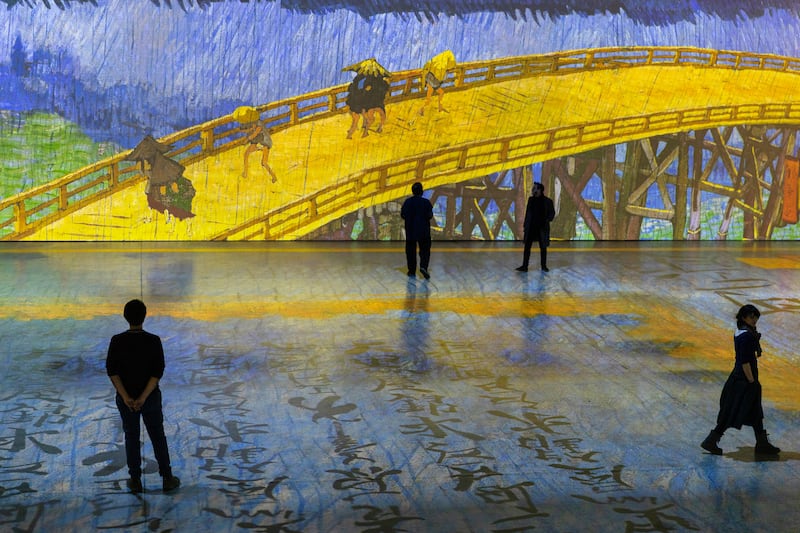
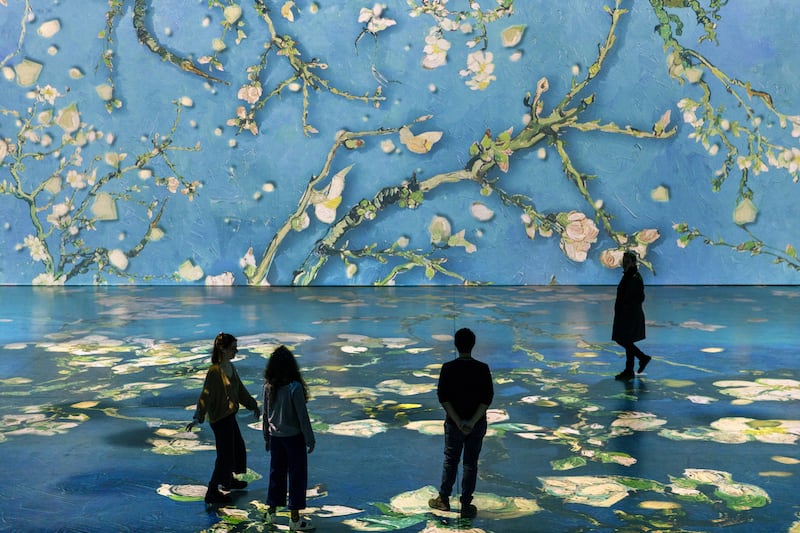
The show lasts about 40 minutes; about 15 or 20 minutes of that is the van Gogh spectacle. It’s a fast-moving twirl through his work, with giant reproductions of his work filling the walls and floor, moving and morphing. Starry nights and wheatfields, streets, terraces and almond blossoms, his bedroom in Arles, a string of self-portraits.
Petals float, figures almost imperceptibly move, images are rapidly supplanted by others. His Corridor in the Asylum becomes a vortex, and is then repeated over and over, surrounding us, with other paintings filling each arch.
There’s a varied soundtrack, with frequent music switches to match the movement and the image. (Thankfully it skirts the obvious; Don McLean’s Vincent doesn’t figure.)
The publicity says it “interprets Van Gogh’s paintings in new ways and through new technologies” and the intro screen (which doesn’t stay long enough for me to digest it properly) talks about diving into his “subconsciousness”, chasing the sun south to where he painted, his manic episodes, and then the “endless scenery through his confinement window”.
There is indeed that progression in the very fast-moving digital visual riff on van Gogh’s work.
It’s less like being inside a van Gogh painting than having a very busy dream, or maybe a pleasant-ish nightmare – a kind of racing, colourful explosion as you fall down a tunnel without being able to stop.
It ends with what’s described as an AI analysis of more than 2,000 of his artworks “with high-dimensional algorithms and neural artworks”, which is a bamboozling overview of his work.
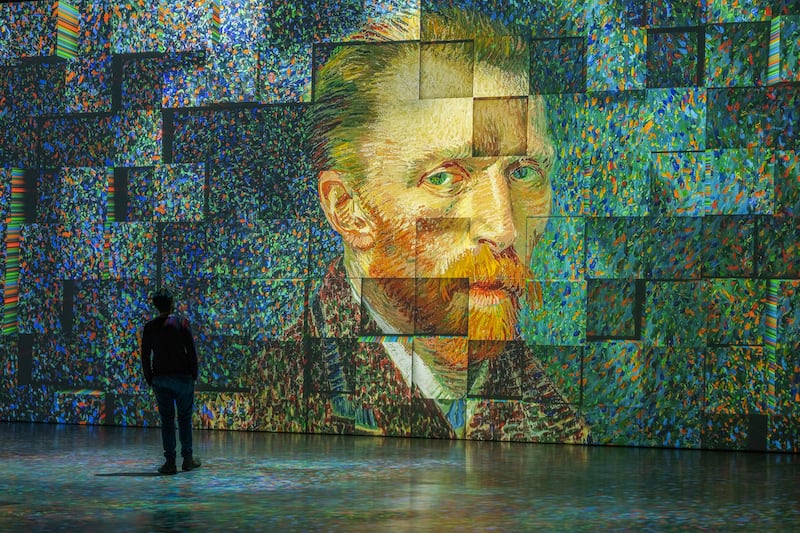
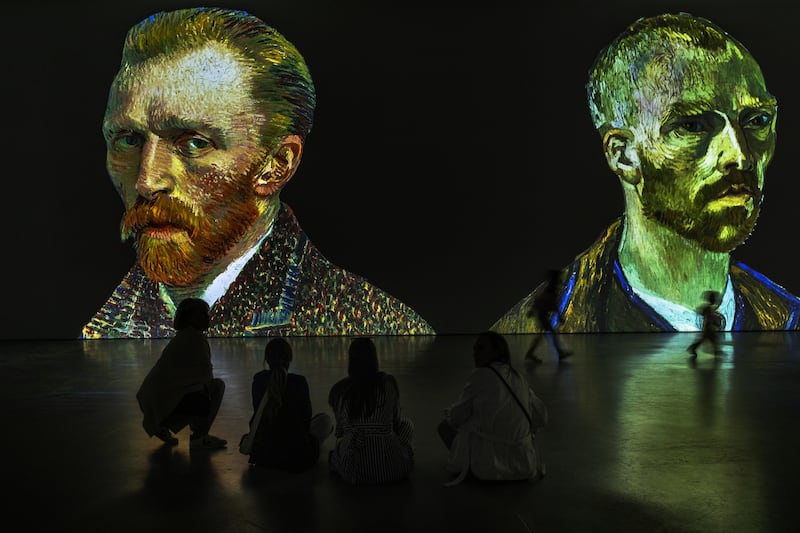
The van Gogh experience is bookended by two other pieces of digital artwork whose presentation is not well signalled beforehand (or it escaped me).
Journey (4 minutes) follows a light particle, and the 11-minute Everything touches on philosophy and physics via optical illusions, playing with perception and awareness. They are both very, very trippy. Relax and chill into it (if it’s a quiet day and you’ve nabbed a beanbag).
Outside the projection hall there’s a small van Gogh shop area (mugs, sweatshirts, prints, fridge magnets – and some NFT artworks) and an “infinity room” (you step for a few minutes into a mirrored room with hanging lights, and the combination creates an effective visual illusion of unending distance).
It’s trite (though true) to say you could go to a gallery in many cities in the world and enjoy the real thing – van Gogh’s actual paintings are certainly more authentic. (For example, Rooftops in Paris, at the National Gallery, which is free.) But this is not a gallery; the paintings are only a starting point, the raw material, the content, for a totally different, digital take.
All three immersive shows are skilfully made, with split-second timing and impressive technology. Theatre of Light says it invested €2 million in the show, which runs until August 1st and aims to attract 100,000 visitors. The big bucks are visible in the scale of the creative editing and the production, yet the overall experience seems pricey at €28.14 per adult (with various concessions).
Those Starry Night brushstrokes and floating almond blossoms lend themselves perfectly to digital riffing, but you have to wonder, would Vincent van Gogh be okay with using tech as an enjoyable 21st century entry point into his work, or would he turn in his grave at his emotionally raw work becoming “content” for commercial digital attractions?












